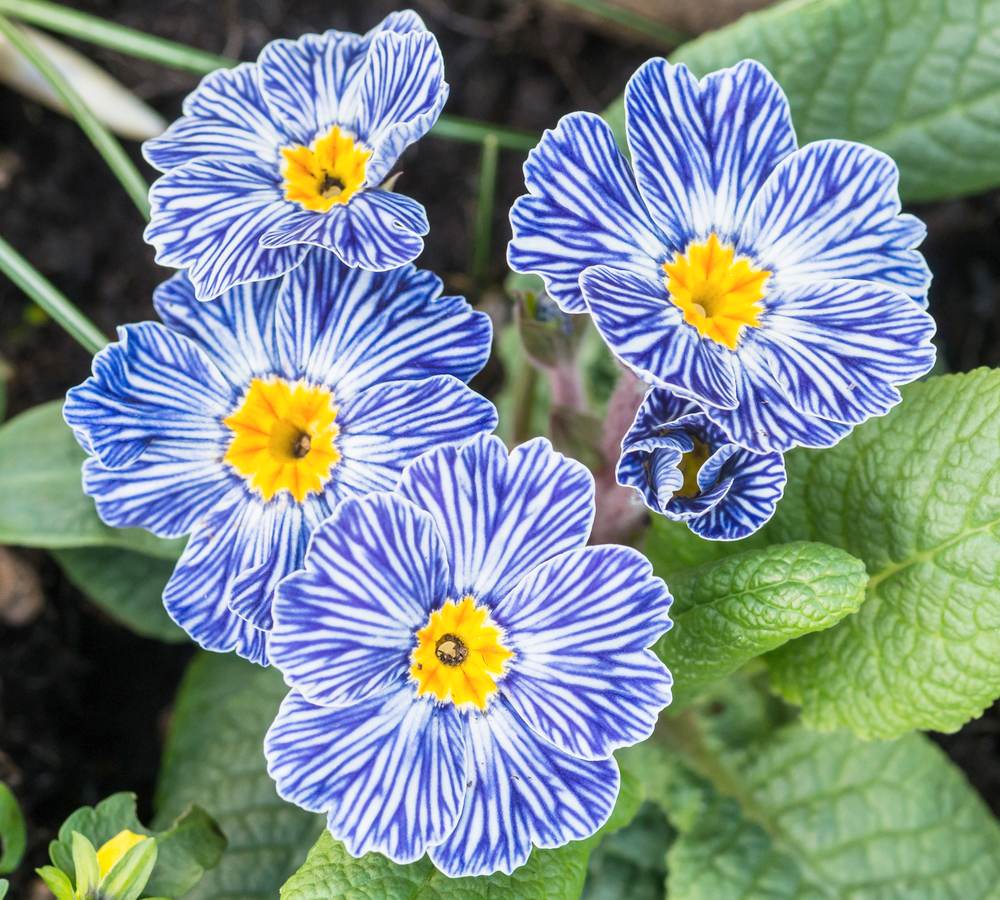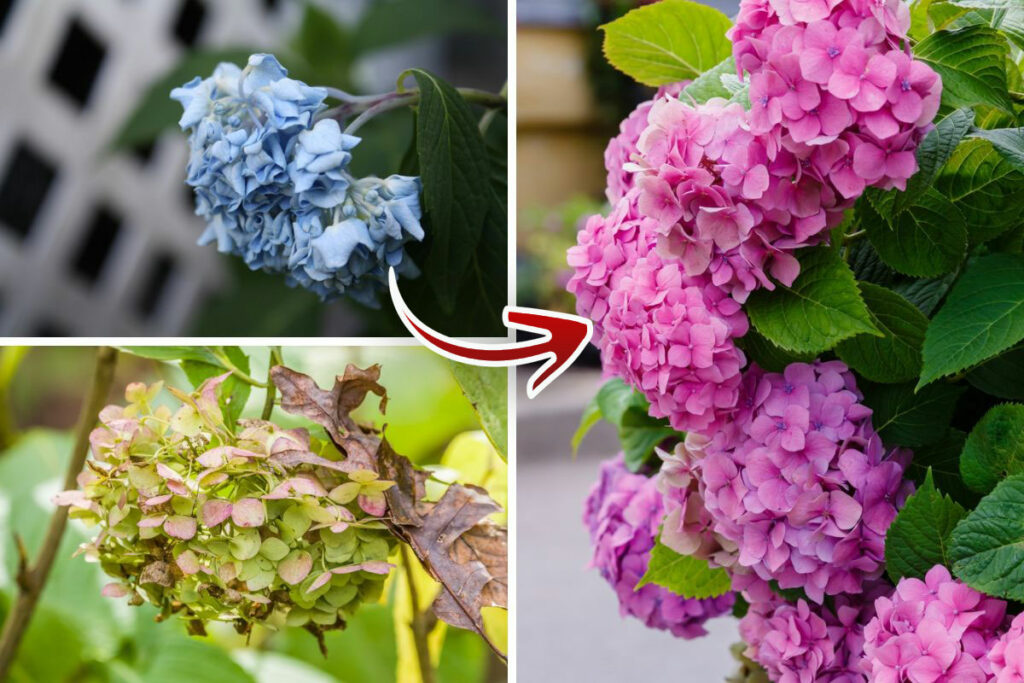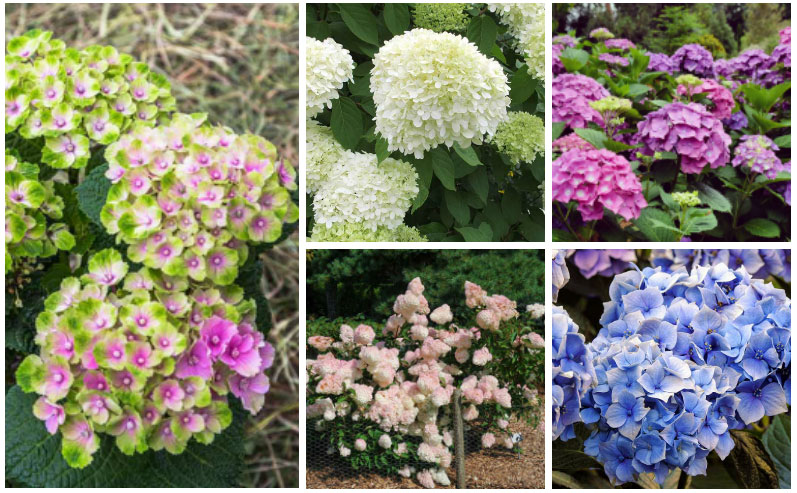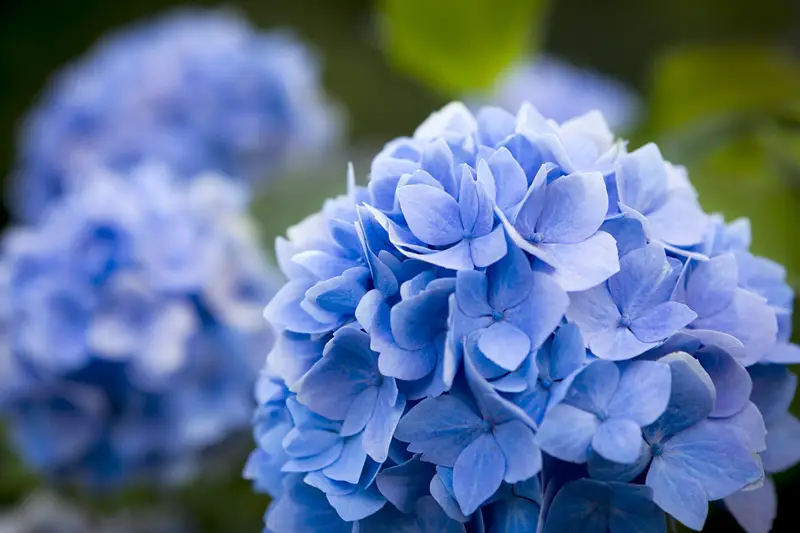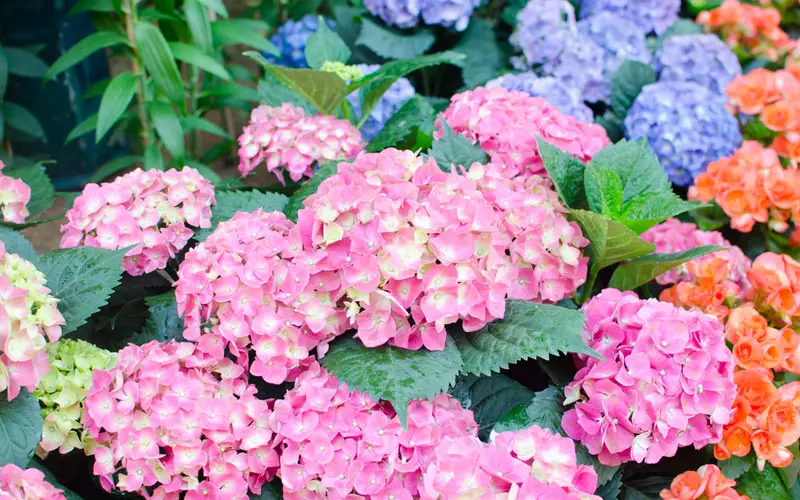
Hydrangeas are a very popular type of flower that is known as wonderful performers in terms of blooms and flower colors.
They are popular additions that many people love having in the garden or containers inside the home.
Even better, they have a unique trick of being able to change the colors of their flowers.
This is technically due to the conditions of the soil and the nutrients and other elements that are in the soil.
Here we’ll go over how this magic trick works and how to go about changing the color of hydrangea flowers in your collection.
Some specific things need to be done but the overall process is fairly easy when you know what to do and what not to do.
How to Change Hydrangea Color
Unlike most flowers, most varieties of hydrangea flowers can change colors. Eighteenth-century gardeners first noted this and made note of the strange occurrence in early garden journals and reports.
Early gardeners experimented with this phenomenon by burying rusty nails, pouring tea, burying other food items, replanting flowers in new locations, and even chanting spells and reciting incantations around their plants.
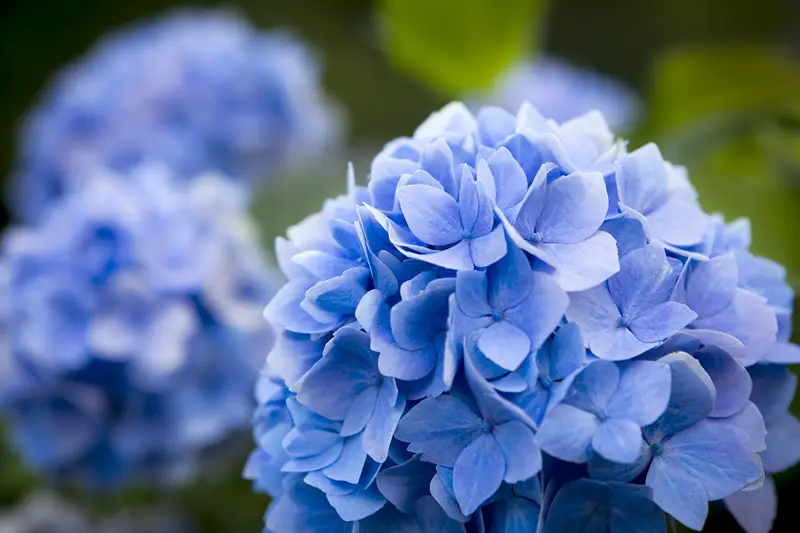
In a day and age where science was nearly non-existent for the everyday person, explanations for this effect largely fell on the magical and supernatural. However, it is the pH of the soil that determines flower color.
According to American Scientist, “the color of many hydrangea blooms acts as a natural pH indicator for the soil in which the plant grows. Such blooms have blue sepals when the shrub grows in acidic soil, but develop red or pink sepals when grown in neutral to basic soils. The hydrangea’s bloom color reveals the pH of the soil.”
So to change the color of your hydrangea, whether from pink or from blue, you will need to make changes to the soil that will shift pH levels to more alkaline or more acidic.
Tricks to Change Hydrangea Color
Generally speaking, the soil is considered to be acidic when it has a pH of under 6.0. Acidic soil often yields blue or lavender-blue hydrangea blooms.
Alkaline soil on the other hand is soil that ranges higher than a 7.0 pH.
This kind of soil promotes pink and red hues in hydrangea blooms. With a pH between 6 and 7, the blooms can be shades of purple-blue to purple-pink.
Because of this trait, home gardeners can use various soil additives to change the pH of the soil and thus change the colors of the blooms on their hydrangea plant.
In fact, a hydrangea can have different bloom colors on the same bush if the roots spread far enough to hit soil pockets of different pH levels. Usually, hydrangeas will be more to the alkaline side of the color spectrum.
However, home remedies for shifting the blooms to blue include adding vinegar or lemon juice to the soil, mulching the plant with coffee grounds, mixing in citrus peels and pine tree needles; or burying rusty nails, pennies and metal around the plant’s roost system.
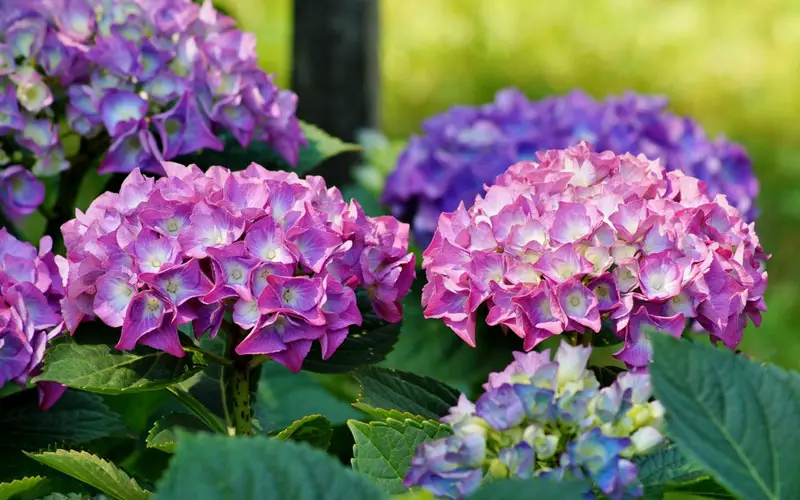
Important Considerations to Keep in Mind
Despite hydrangea being unique and being able to shift the colors of their blooms, it is important to remember that nature can be fickle and doesn’t always bend to our wills. Additives to the soil may need to be applied over and over to build up levels high enough to affect soil pH without shocking your plant with a sudden and drastic change.
It may take several months for a change to occur and to see the start of the color ship happen. You also should not be disappointed if the color stays the same, despite your best efforts to change the color of your hydrangeas. Some selections resist changing due to the extensive selective breeding and crossing that has been done to develop plant size and bloom size specifics we see today.
Another factor to consider is that white hydrangeas tend to remain white and will not really shift to one color or the other. They usually stay white or at the most take on a faint pink or blue hue.
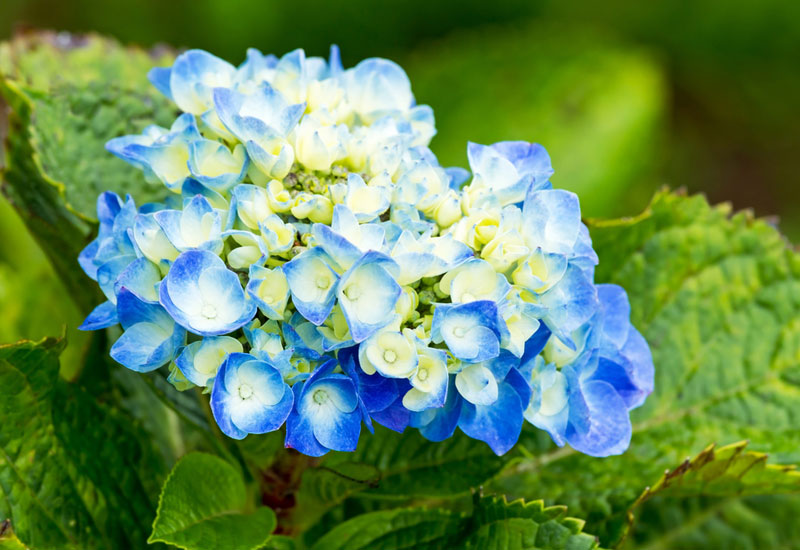
And finally. don’t be surprised if the hydrangea you bought from the store changes color the next time it blooms when you have planted it outside.
Remember: the pH of the soil determines the bloom color and many things can impact that pH level and thus affect the color of your hydrangeas.



